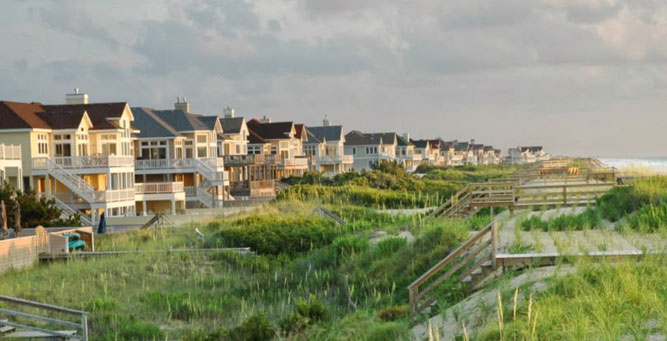As community association board members serve as the governing body of neighborhoods, preserving their vitality and protecting their assets becomes a collective responsibility. In the realm of safeguarding, a vital practice is the annual review of insurance policies. In addition to essential coverages such as Property, Liability, and Building and Ordinance policies, let’s look at other coverages you may not have considered and some best practices for reviewing them.
1. Directors and Officers (D&O) Insurance
Boards of directors serve to make decisions on behalf of the community. However, even the most well-intentioned actions can attract legal challenges. D&O insurance protects board members against claims of negligence, errors, or unintentional wrongful acts while carrying out their duties. This insurance offers coverage of defense costs and indemnification in case of legal proceedings, shielding board members from personal financial ruin.
2. Cyber Liability Insurance
In today's digital age, we must be on the lookout for virtual crimes just as much as physical ones. Community associations handle sensitive personal data and financial information, making the association and its members prime targets for cyber threats. Cyber Liability insurance offers a safety net against cyberattacks, data breaches, and privacy violations. It covers expenses related to investigations, legal costs, notifying affected parties, and restoring compromised systems, fortifying your association's resilience in an increasingly interconnected world.
3. Workers Compensation Insurance
Community associations rely on board members, service providers, and management teams to operate. Worker's Compensation insurance is a legal requirement in many places and protects employees and volunteers against workplace injuries or illnesses. This type of insurance provides medical care, disability benefits, and lost wage compensation. It demonstrates the association's commitment to the well-being of its workforce and compliance with laws and governing documents.
4. Crime and Fidelity Insurance
We all like to think that someone we trust will never break that trust; however, theft, embezzlement, or fraud can happen and cripple an association's financial stability. Crime and Fidelity insurance acts as a guardian, offering protection against financial losses caused by dishonest acts committed by employees, volunteers, or external parties. This coverage is essential in preserving the association's finances.
Best Practices for Annual Insurance Reviews
1. Engage a Trusted Insurance Advisor
Seek out an experienced insurance advisor specializing in community association insurance. Their expertise will help you navigate the complexities of policies and ensure your coverage aligns with the association's unique needs.
2. Evaluate Changing Risks
Communities and the risks they face evolve over time. Assess any new projects, activities, or assets the association has undertaken since the last review to determine if additional coverage is necessary. When the association is responsible for insuring assets such as buildings or amenities, hiring an expert to conduct an insurance study is a good idea to confirm that valuations are accurate.
determine if additional coverage is necessary. When the association is responsible for insuring assets such as buildings or amenities, hiring an expert to conduct an insurance study is a good idea to confirm that valuations are accurate.
3. Review Policy Limits
Adequate coverage is paramount. Reevaluate policy limits to account for inflation and the association's growth, ensuring that potential losses won't exceed the coverage.
4. Assess Deductibles
Balancing premiums and deductibles can significantly impact your association's financial health. Analyze the deductibles for each policy, aiming for an optimal balance between cost and risk coverage.
5. Check Policy Exclusions
Understanding what is not covered is as crucial as knowing what is covered. Scrutinize policy exclusions to identify potential gaps and consider supplementing coverage where needed.
6. Confirm Compliance
Verify that all insurance policies comply with local regulations and the association’s governing documents. Non-compliance could lead to legal and financial repercussions.
7. Encourage Transparency
Foster open communication with board members, property owners, and insurance providers. Share the review outcomes and ensure everyone knows about the association's insurance protection.
8. Educate Association Members
Association insurance policies cover common elements and association risks. It is sound business practice to educate homeowners so they understand their responsibility for insurance. This is particularly important in multi-family communities where the association may be responsible for routine building repairs, but the homeowner is responsible for repairs following a casualty loss. For this reason, some association documents require owners to provide evidence of their personal homeowner insurance policies to the association, which should be updated annually.
evidence of their personal homeowner insurance policies to the association, which should be updated annually.
In conclusion, an annual insurance review is crucial in safeguarding the present and fortifying the future of community associations. Associations can nurture a resilient and thriving community by scrutinizing and updating policies covering Directors and Officers, Cyber Liability, Workers Comp, and Crime and Fidelity. Empowered with comprehensive insurance coverage, these associations can face uncertainties with confidence.
Remember, secure communities start with proactive measures, and your association's annual insurance review is an essential piece of the puzzle.
About Community Association Management Services
In business since 1991, CAMS is North and South Carolina’s premier community management company. With experienced local managers in each of its nine regions, CAMS provides innovative solutions to the community associations it serves. Additionally, CAMS was featured on Inc. Magazine’s 2022 Inc. 5000 list of the fastest-growing private companies in America. To learn more, visit www.camsmgt.com/choose-cams.























